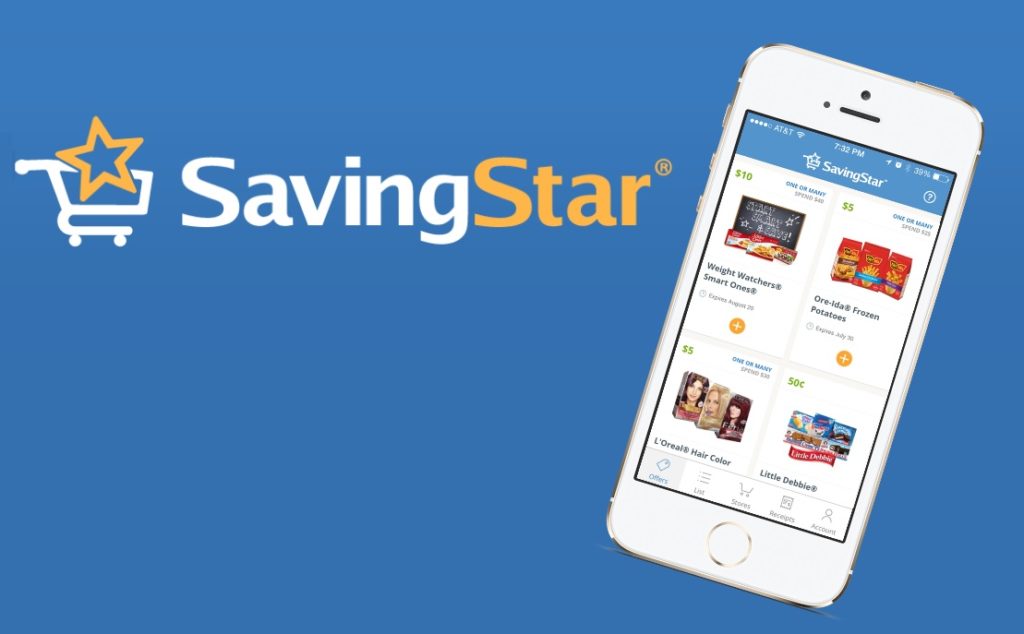
As the rental car company Avis once said, when you’re number two, you try harder. But what do you do when you’re number three?
Apparently you resign yourself to doing what numbers one and two are doing.
The cash-back app SavingStar, which once boasted one of the lowest payout thresholds in the business, is now quadrupling its $5 minimum cash-out balance to $20, just like its larger competitors Ibotta and Checkout 51. The change takes effect on April 30th. “If you have over $5 in your account now and would like to take it out before this change takes place, please do so by 4/29/2018,” users were informed this week via email.
So why the change? “We strive to save members as much money as possible,” SavingStar spokesperson Cristina McIntyre told Coupons in the News. “In doing so, we must always consider what business model keeps us the most competitive and allows us to be the most flexible. Aligning payout amounts with the industry standard makes the most sense for our business at this time.”
One might argue that having a lower payout minimum is what kept SavingStar more competitive. But that was before its recent alliance with Checkout 51, which appeared to give SavingStar a much-needed lifeline. In July of last year, just before the partnership was launched, the number of offers on SavingStar had dwindled to just about two dozen – far fewer than the hundreds available on Ibotta and Checkout 51.
Today, there are more than 60 offers on SavingStar. Theoretically, that should now make it easier to find enough offers to get you to $20 more quickly. But less than half of those offers are unique to SavingStar – the rest are “shared” with Checkout 51.
That’s because the two apps began cooperating last year to block users from stacking offers from each app. If you buy a product and submit for a rebate on Checkout 51, for example, you won’t be able to submit for the same rebate on the same product on SavingStar. That move helped encourage brands to run the same offers on both apps, secure in the knowledge that they wouldn’t be paying out twice for a single purchase – the same way they don’t allow two manufacturer’s coupons to be used on one product. “These changes are our way of aligning with how the industry has always worked,” McIntyre told Coupons in the News at the time. “By doing so, we make it possible for brands to provide SavingStar members with more money-saving opportunities every week.”
Many of those additional “money-saving opportunities” that now appear on SavingStar are identical to those that are already available on Checkout 51. On the one hand, that makes SavingStar’s selection look somewhat more robust than it really is. On the other hand, if you have a choice to redeem a rebate on either platform, which are you going to choose – the one that makes you wait until you earn $20 before you can cash out, or the one that lets you cash out with just five bucks?
SavingStar had a significant advantage there. And Checkout 51 couldn’t have been too thrilled about that.
Neither Checkout 51 nor SavingStar has made the nature of their relationship entirely clear – do they merely have a handshake agreement to cooperate and share offers for their mutual benefit, or does Checkout 51 have a stake and a say in how SavingStar is run? It’s hard to imagine SavingStar willingly giving up a competitive advantage that made it a more attractive option, unless it was pressured or forced to do so. Then again, raising the cash-out threshold to a level that some users may never reach, means SavingStar will ultimately make fewer payouts and could end up keeping more cash for itself.
“Shopmium did that, then closed without paying people below the $20,” one cynic wrote on an online deals discussion forum in response to SavingStar’s news. Shopmium, which wound down last year, and Snap by Groupon, which folded two years ago, are among the defunct cash-back apps that had $20 payout thresholds, and never paid out to anyone carrying a sub-$20 balance at the time of their demise.
If raising its cash-out minimum is a way to minimize its liabilities, some people are beginning to worry about the future of SavingStar. Others say they’re simply done with it. “Haven’t used SavingStar in a while, will cash out now and probably never go back,” one discussion forum participant wrote. “It would take me YEARS to get to $20 at my current pace!” another commented.
Other users say they like that SavingStar offers are available longer and don’t disappear as quickly. Others like its unique features, such as “One or Many” offers, “Always On Rewards” and the weekly “healthy offers” on produce items, though SavingStar no longer makes them available to everyone – only to users who redeem at least two offers the prior month.
So SavingStar still has some advantages. But come the end of the month, if the loss of the low-payout advantage is something that is likely to affect you – better cash out while you still can.
















In addition to C51 & rebate app collusion, Savingstar actively seeks out other ways to significantly reduce its value to consumers with non-rebate savings tools as well. They share clipped offer databases for store specific eCoupons such as with Shoprite! I use Savingstar significantly less now because it is so much of a hassle not knowing exactly what I will save in my shopping trip. What’s next, will Savingstar ask the cashiers to compare my Printables or Insert Coupons to the offers I have clipped in Savingstar?? Too much wasted development effort on this path Savingstar, you should focus on improving your value to consumers instead, and maybe you wouldn’t be #3.